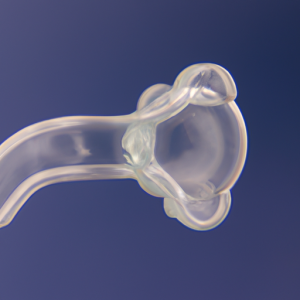The mammary glands, also known as the breasts, are an integral part of a woman’s reproductive system. While they are primarily associated with breastfeeding and nurturing infants, they can also be susceptible to various diseases. Benign diseases of the mammary glands, although non-cancerous, can cause discomfort and concern for many women. Understanding the causes, symptoms, and diagnosis of these conditions is crucial for effective management and peace of mind. In this article, we will delve into the world of benign diseases of the mammary glands, exploring their causes, symptoms, and diagnosis in the first section. In the second section, we will discuss the available treatment options for these conditions, enabling individuals to make informed choices about their healthcare. Finally, the third section will focus on lifestyle changes and self-care tips that can help individuals take control of their well-being and manage benign diseases of the mammary glands effectively. By the end of this article, readers will be equipped with a comprehensive understanding of these diseases and the tools to navigate their management confidently.
1. Understanding Benign Diseases of the Mammary Glands: Causes, Symptoms, and Diagnosis
Benign diseases of the mammary glands refer to non-cancerous conditions that affect the breast tissue. Although these conditions are not life-threatening, they can still cause discomfort and concern among women. Understanding the causes, symptoms, and diagnosis of these benign diseases is essential for early detection and appropriate treatment.
The causes of benign diseases of the mammary glands can vary depending on the specific condition. Hormonal imbalances, such as fluctuations in estrogen and progesterone levels, are often associated with these diseases. Other factors that may contribute to the development of benign breast conditions include genetics, age, reproductive history, and certain medications.
Symptoms of benign diseases of the mammary glands can range from mild to severe. Common symptoms include breast pain or tenderness, swelling, lumps or thickening of the breast tissue, nipple discharge, and changes in breast size or shape. It is important to note that these symptoms can also be indicators of breast cancer, highlighting the importance of seeking medical attention for proper diagnosis.
Diagnosing benign diseases of the mammary glands typically involves a comprehensive evaluation by a healthcare professional. Initially, a thorough medical history will be taken to assess any risk factors and understand the nature of the symptoms. This will be followed by a physical examination of the breasts, including palpation to identify any lumps or abnormalities.
Further diagnostic tests may be recommended to confirm the diagnosis and rule out any malignancies. These tests may include mammograms, ultrasound scans, MRI scans, and breast biopsies. Mammograms are particularly useful in detecting certain benign conditions, such as fibroadenomas and cysts.
In some cases, the diagnosis of a benign disease of the mammary glands may require a biopsy, which involves removing a small sample of breast tissue for laboratory analysis. This helps to determine the specific nature of the condition and guide the appropriate treatment
2. Exploring Treatment Options for Benign Diseases of the Mammary Glands
Exploring Treatment Options for Benign Diseases of the Mammary Glands
When it comes to treating benign diseases of the mammary glands, the approach largely depends on the specific condition and its severity. While some benign breast conditions may not require any treatment at all, others may necessitate medical intervention to alleviate symptoms or prevent complications. Here, we will delve into the various treatment options available for benign diseases of the mammary glands.
1. Observation and Regular Monitoring:
In certain cases, such as with fibrocystic breast changes or breast cysts, the recommended approach may involve simple observation and regular monitoring. This is especially true if the condition is not causing significant discomfort or posing any risk of complications. Regular breast self-examinations and routine clinical breast examinations can help detect any changes or abnormalities, ensuring timely intervention if required.
2. Medications:
Medications can play a crucial role in managing benign breast conditions. Nonsteroidal anti-inflammatory drugs (NSAIDs) may be prescribed to alleviate pain and inflammation associated with conditions like mastitis or fibrocystic breast changes. Hormonal therapies, such as oral contraceptives or hormone replacement therapy, may be employed for certain conditions like mammary duct ectasia or adenosis, where hormonal imbalances are believed to contribute to the development of the disease.
3. Drainage or Aspiration:
For conditions like breast cysts, where fluid-filled sacs form within the breast tissue, drainage or aspiration may be performed. This involves using a fine needle to remove the fluid from the cyst, thereby reducing its size and relieving associated symptoms. This procedure is usually performed under local anesthesia and can be done in a clinic setting.
4. Surgical Interventions:
In some cases, surgical intervention may be necessary to treat benign diseases of the mammary glands. If a breast abscess develops due to
3. Taking Control: Lifestyle Changes and Self-Care Tips for Managing Benign Diseases of the Mammary Glands
Taking Control: Lifestyle Changes and Self-Care Tips for Managing Benign Diseases of the Mammary Glands
When it comes to managing benign diseases of the mammary glands, there are several lifestyle changes and self-care tips that can help alleviate symptoms and improve overall well-being. While these measures may not cure the condition, they can certainly make a significant difference in managing the symptoms and reducing the risk of complications. Here are some recommended lifestyle changes and self-care tips that individuals can incorporate into their daily routine:
1. Maintain a Healthy Weight: Obesity has been linked to an increased risk of benign breast diseases. Therefore, it is important to maintain a healthy weight through a balanced diet and regular exercise. A diet rich in fruits, vegetables, whole grains, and lean proteins can provide essential nutrients and help reduce inflammation. Regular physical activity not only aids in weight management but also improves overall hormonal balance, which can positively impact the health of mammary glands.
2. Practice Breast Self-Examinations: Regular self-examinations of the breasts can help individuals become familiar with their normal breast tissue and detect any changes promptly. By performing these examinations once a month, individuals can be proactive in identifying any new lumps, swelling, or changes in the breast tissue. Early detection is crucial in the management of benign diseases as it allows for timely medical intervention and reduces the risk of complications.
3. Wear a Properly Fitted Bra: Wearing a bra that provides adequate support is essential for maintaining breast health. Ill-fitting bras can lead to discomfort, poor circulation, and contribute to the development of benign diseases. It is recommended to get professionally measured for a bra and choose one that fits well, provides proper support, and does not restrict movement. Opting for bras made from breathable materials can also help reduce irritation and inflammation.
4. Limit Alcohol Consumption: Studies have

